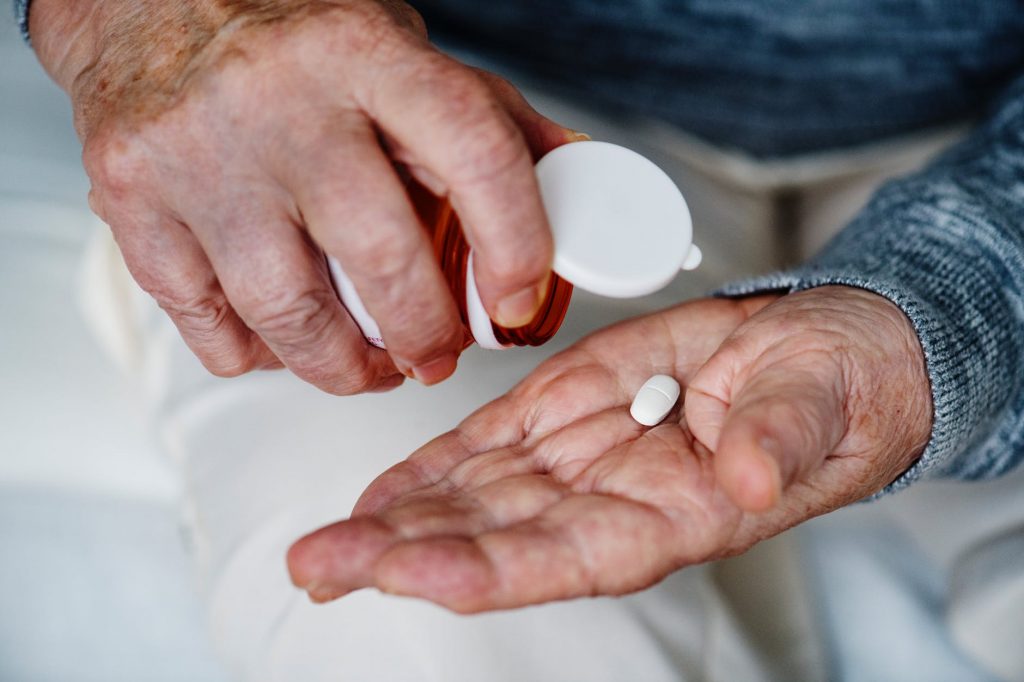Throughout the ’90s, medical specialists were noticing an immense issue with untreated pain among patients. It was so intense that the American Pain Society quickly advocated to recognize pain as a “vital sign”, right along with heart rate and body temperature. Many rallied for the use of opioids to aid in pain relief.
At the same time, oxycodone was released and heavily marketed. Pharmaceutical companies assured doctors that opioids could – in fact – be used successfully for pain and would not result in addiction. Combined, all of these situations had a direct impact on the opioid epidemic that is currently being experienced in the United States.

Staggering Opioid Prescription Statistics
When it comes to opioid consumption, the United States was found in the year 2009 to consume 99% of the entire consumption of hydrocodone, worldwide.
In that same year, it consumed a total of 81% of the oxycodone, worldwide.
By 2016, medical professionals wrote in excess of 214 million opioid prescriptions.

Today, over 1,000 different people receive treatments – each day – in emergency rooms for the misuse of their prescription opioids. More than 40% of all opioid-based deaths stem from prescriptions issued for the pain relief drugs.
The CDC has determined that the financial burden of opioid misuse costs the United States nearly $80 billion a year.
The opioid crisis in American costs money and lives. In fact, each day, approximately 130 people die from an opioid overdose.
Opioid Crisis Response Act
On September 17th 2018, the Senate of the United States passed the Opioid Crisis Response Act, which focuses on treating the opioid crisis in America and the prevention of the crisis from growing.
This act has helped to establish treatment centers across the nation and focuses on outreach, the treatment of those suffering from opioid addiction, coordinating care, sharing information, and any and all recovery services needed to resolve this devastating issue.
This act was created to fight the devastating battle occurring within country and to ensure collaboration between support groups for winning the battle.

The “Knowns”
To truly understand the devastation of the opioid crisis, we feel it is essential to outline that which is currently known:
- Research has established that up to 29% of all people who are prescribed opioids to treat an issue with chronic pain abuse the medications.
- Up to 12% of those prescribed develop a disorder associated with the use of the opioids.
- Approximately 6% of people who are known to misuse opioids will typically transition from their prescription medication to the use of heroin.
- From the year 2016 to the year of 2017, overdoses stemming from opioid usage increased a whooping 30%.
- As a result of opioid addiction, increases have occurred in drug injection use. This means that infectious-based diseases such as HIV and hepatitis C are now occurring at alarming rates.
The United States Department of Health and Human Services Response
The Department of Health and Human Services has a response in place to the opioid epidemic in the United States. This response consists of a total of five priorities, which are as follows:
- First, it is their goal to improve a person’s access to services that aid in treatment and recovery of opioid addiction.
- Next, they promote the use of medications that aid in the reversal of an opioid overdose.
- The organization aims to optimize the understanding of the opioid problem in the country by placing an emphasis on surveillance of the public’s health.
- They constantly strive to study and research so that they are able to provide the latest and greatest information on the issues of both “pain” and “addiction”.
- Finally, they advance and encourage better practices when it comes to managing pain, such as encouraging the use of physical therapy.
What is Opioid Addiction?
Opioid addiction is a chronic-based disease that results in many health, social, and economic-based problems. These medications are part of a drug class that results in the feelings of both pleasure and relief from pain in the nervous system.
Commonly prescribed opioids include oxycodone, methadone, and hydrocodone. The illegal drug heroin is also an opioid.
An addiction is occurring when a person feels the need to use the drugs, even when the medical necessity is no longer valid. These drugs change the general chemistry within the brain and also lead to drug tolerance.
Dependence develops when taken for a long period of time. If stopped suddenly, withdrawal will occur with symptoms such as anxiety, cramping of the muscles, and gastrointestinal distress.

What are the Signs of an Opioid Addiction?
There are many signs that may indicate an addiction to opioids. The following outlines the most common of these:
- In most instances, the first sign of an addiction is the inability to stop using opioids or the inability to just use the amount that was recommended by a doctor.
- Many will suffer from poor coordination.
- It is common for those addicted to become highly drowsy or appear to be very tired on a regular basis.
- The rate in which breathing occurs may be slow or appear to be shallow.
- When a person is addicted to opioids, they may suffer from immense gastrointestinal complications such as nausea, vomiting, diarrhea, and constipation.
- Many may become easily agitated, have rapid mood swings, experience anxiety, depressed, or highly irritable.
- It is common for people to experience high state of euphoria while addicted to opioids.
- Those that are addicted to these drugs will often become withdrawn, abandon their responsibilities, have problems making decisions, and will have lower levels of motivation.
- An addict may need more or less sleep than usual.
What Causes a Person to Become Addicted to Opioids?
As mentioned previously, opioids change the chemistry in the brain. They do this by creating artificial-based endorphins. These do successfully block pain, but they also make a person “feel good”.
By using too much of an opioid, the brain will become dependent on the artificially created endorphins.
It can become so severe that the brain just stops naturally producing its own endorphins.
In the meantime, the body develops a tolerance to the opioid. This means it takes more and more to experience the same effect. The body becomes dependent. It is then that withdrawal may occur if the medication is stopped.
How Can A Person Avoid Becoming Addicted to Opioids?
According to research, it is best to avoid using opioids for longer than a week.
In some instances – depending on the person, the dosage, and the reason for usage – it may be safe to use these medications for up to a month without becoming addicted; however, using any longer than this definitely means trouble.
If you have a chronic pain condition – such as fibromyalgia, arthritis, or a similar issue – it is advised to find another alternative to manage your pain on a long-term basis. Out of all of the ways to manage pain on your own, physical therapy is considered to be the safest option. Additionally, it renders the best results.

How Does Physical Therapy Help with Pain?
It is basic knowledge that all of the forces that occur within the body affect one another.
Physical therapists work with patients to restore the natural balance within the body.
This includes coordination, strength, and flexibility.
As a result, the movements of the body, the circulation of blood throughout the body, and the natural nerve pathways are not hindered by pain and other imbalances.
Opioids do help alleviate pain, but only on a short-term basis. Physical therapy helps to alleviate pain on a long-term basis – without the use of dangerous and potentially fatal chemicals.
Physical therapy strengthens the body, helps an individual move easier, and drastically improves their overall quality of life.
What Happens in a Physical Therapy Session?
When you work with a physical therapist, you will be educated on a large assortment of exercises that help to strengthen the body, increase the heart rate in a safe manner, improve your flexibility, stretch out your muscles, and increase your overall mobility.
You may use heat packs, ice packs, ultrasound technology, TENS units, or have a massage performed in order to help to alleviate pain.
Physical therapists do more than knock out the pain. They will train and educate you on methods that will allow you to have control over your body and reduce your own pain – without using opioids.
We Can Help
The opioid crisis in America is a serious problem. These dangerous drugs have killed many people.
They have caused addiction in millions.
Opioids destroy and take lives. If you suffer from pain, there is a better way to cope. That is, physical therapy.
We here at Back to Motion offer many different therapies for individuals who are suffering from pain or chronic conditions that result in pain.
If you would like to regain control over your body and eliminate your pain – once and for all – contact us today.
